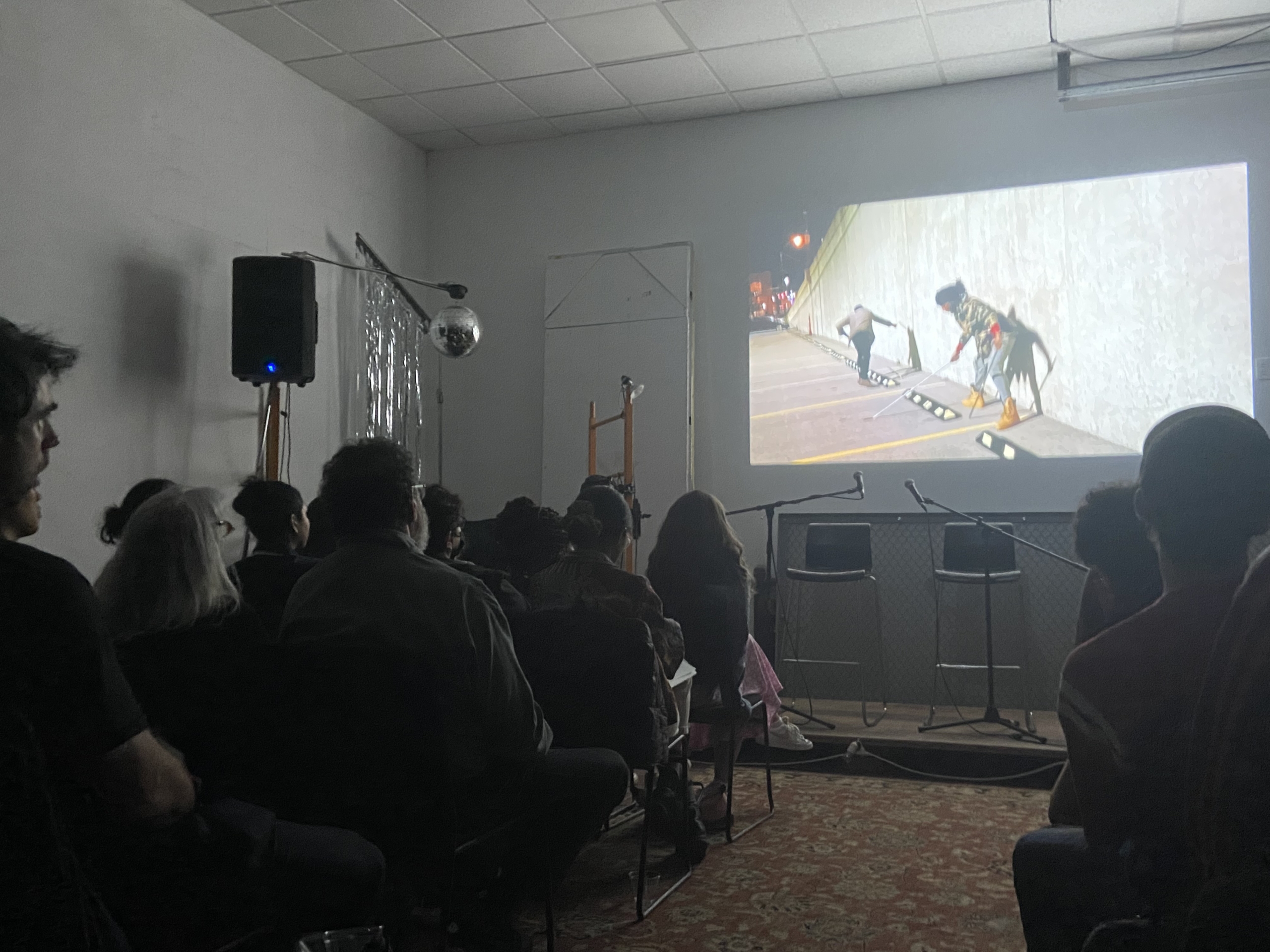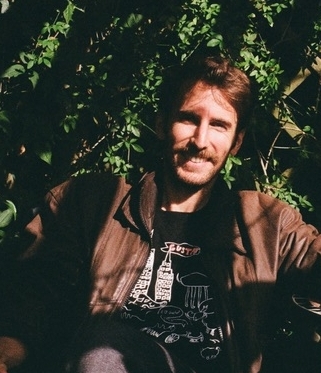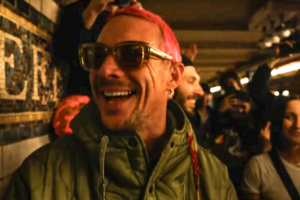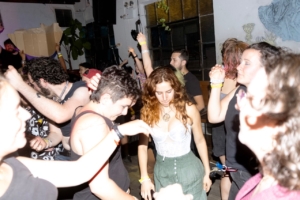Earlier this month, a crowd of around fifty people showed up at the somewhat new home of the UnionDocs Center for Documentary Art to see Crystal Z. Campbell and Catalina Alvarez screen their experimental documentaries in person. Moments prior, this eclectic mixture of Ridgewood hipsters and Fordham students chatted amongst themselves, next to some of the center’s collage art, created by students in a workshop that Campbell once ran at Fordham, which focuses on the history of San Juan Hill, the Manhattan neighborhood where West Side Story takes place and that was largely demolished in the 1950s to build Lincoln Center.
“I discovered UnionDocs this January,” Justin Park Seong-Eon, now a regular, tells me while we wait, “I really like the vibe. I feel like there’s a real sense of human community here. They do a great job of catering to film people and philosophy people.” Also in attendance was Ruth Estevez, once a curator at the Roy and Edna Disney CalArts Theater in Los Angeles; she had appeared here to moderate a Q&A.
First up was “Sound Spring,” actually a 25-minute excerpt of a feature of the same name that Alvarez, a Fordham University professor, is still making. The excerpt was a fascinating peek into the lives of residents of Yellow Spring, Ohio, where Alvarez once taught at Antioch College. With the movie, Alvarez is able to paint a mosaic that documents how people there and their ancestors were been involved in some of the village’s more contentious political events in the past two hundred years. One of the documentary’s main characters, the late Karen McKee, daughter of the village’s first Black police chief, recalls her ancestors’ settlements after slavery. Another interviewee rollerblades and reads the village’s water meters. It’s the story of a town that doesn’t frame any singular point of view, but rather gives the locals there a platform to talk.
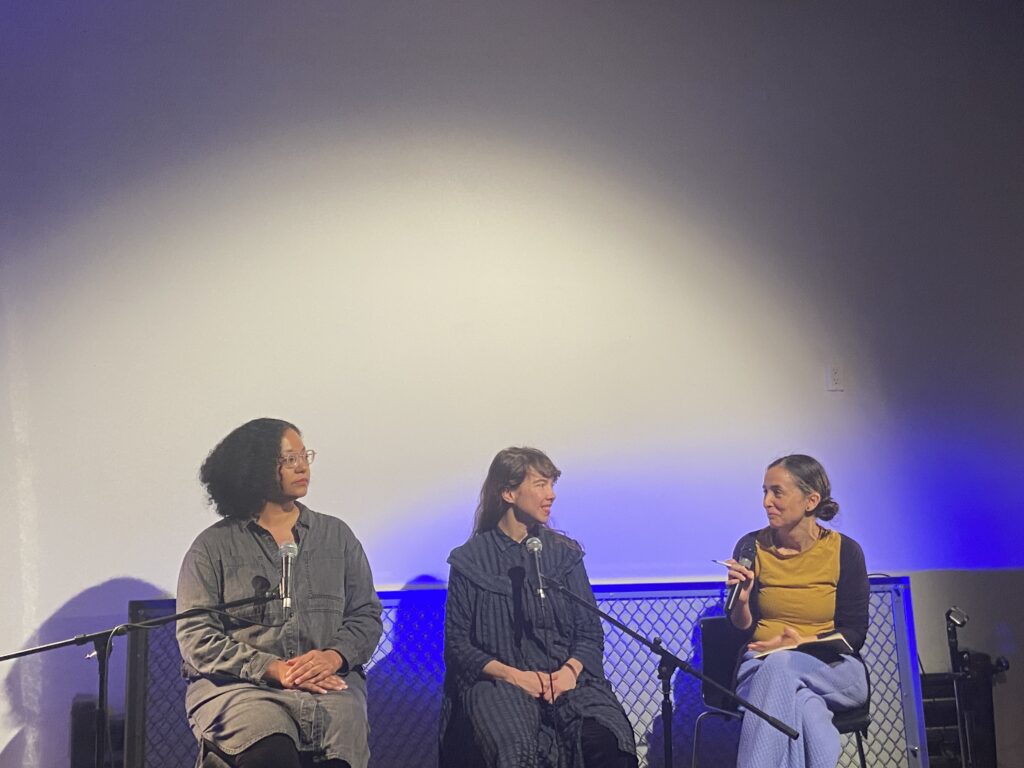


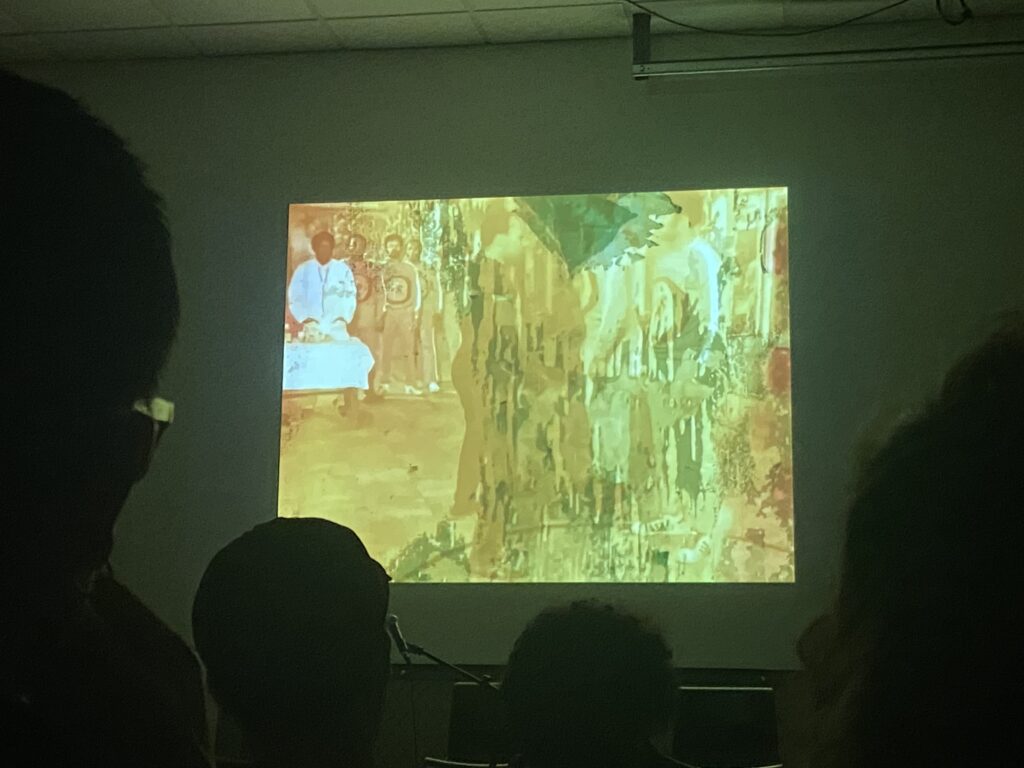
The two shorts from Campbell — a 2021 Guggenheim Fellow from Oklahoma who now lives in St. Louis — were considerably more experimental. A 2017 short called “Go-Rilla Means War,” for instance, was made from 35mm footage that was swiped and salvaged from the since-demolished Slave Theater in Bedstuy. On top of the footage, Campbell adds an abstract, lyrical voiceover that tells a fractal story about the gentrification of the surrounding neighborhood while eschewing traditional narrative.
“When I found this footage on the floor, it was unfinished, which has to make us wonder: how many other films like this have been left on the floor?,” Campbell asked later, after the screening. “In the credits, it says ‘Director Unknown’ but I believe it was most likely Justice John Phillips,” they said afterward, in reference to one of the Slave Theater’s last owners, a local real estate magnate and civil court judge who died in 2008.
“SLICK,” a work-in-progress from Campbell is a short doc they shot in Tulsa, Oklahoma that focuses, like many numerous recent TV documentaries, on the 1921 Tulsa Massacre and the surrounding historical neighborhood of Greenwood, much of which “SLICK” indicates has been paved over into parking lots and highway underpasses. In the short, two untrained performers hold poles and scrape them around and around on nearby pavement. When the pair begin to wave their arms in trance-like states, it reminded me of a scene from avant-gardist Maya Deren’s 1946 short, “Ritual in Transfigured Time.” Later in “SLICK,” there comes a point when Campbell’s actors turn to banging their poles on a mural that memorializes the Tulsa Massacre, and with a handheld camera, Campbell pulls us back from the actors who keep on sitting there, banging their poles onto the pavement.
Union Docs’ event space is located at 352 Onderdonk Avenue. Check out their upcoming programming here.
Photos taken by Max Rovo for Bushwick Daily.
For more news, sign up for Bushwick Daily’s newsletter.
Join the fight to save local journalism by becoming a paid subscriber
